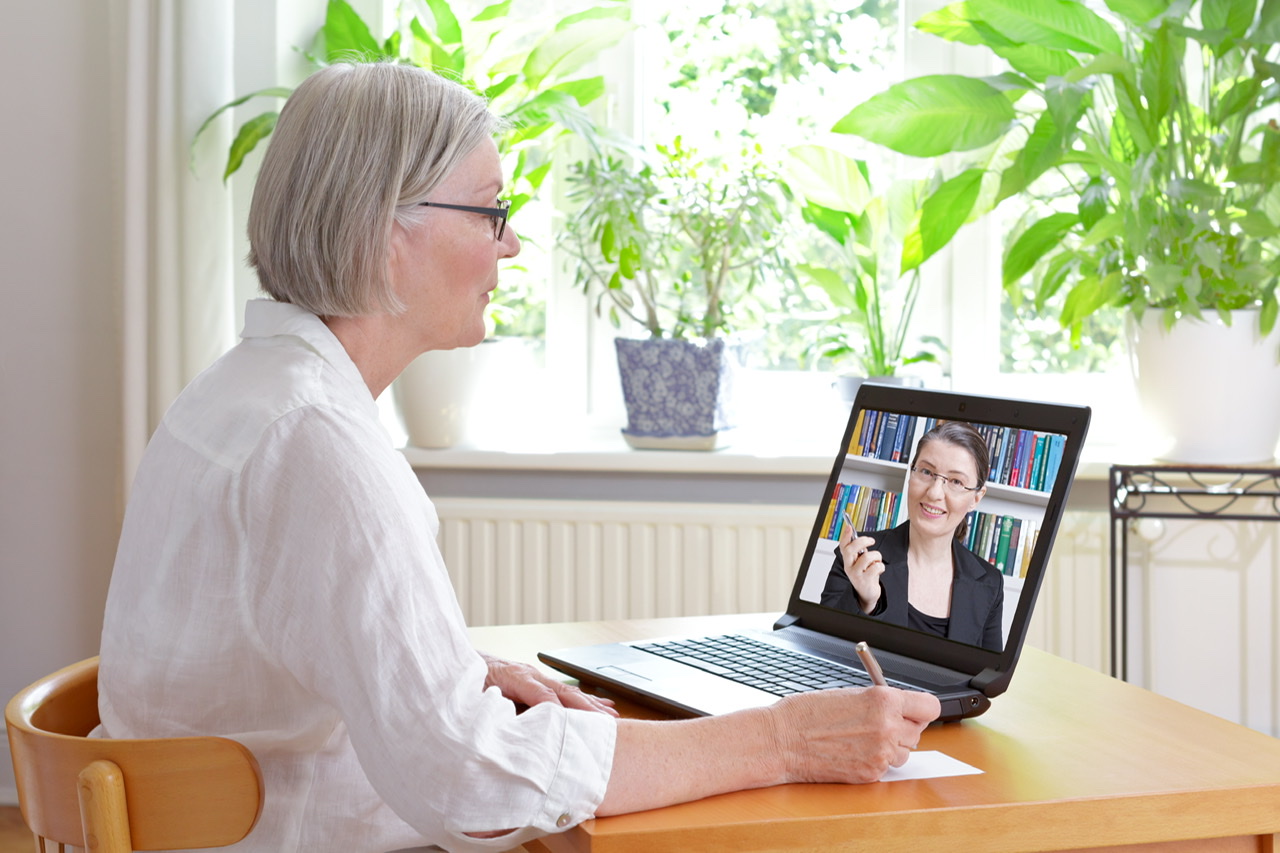Wollongong Speech Pathology is now offering speech pathology telepractice. In this article we explain what telepractice is, why we do it, and tips to make it most effective.
What is speech pathology telepractice?
Speech pathology telepractice, also known as speech pathology telehealth, means the delivery of speech pathology services at a distance, using technology.
Just like ‘regular’ speech pathology services, telepractice is very flexible and individualised. It can be delivered:
- one-on-one (speech pathologist + client),
- in a group (speech pathologist + a group of clients), or
- for group training (e.g. speech pathologist + nursing / support staff).
The most common format Wollongong Speech Pathology offers is videoconferencing. This means your speech pathologist organises an appointment with you (like normal). At the time of the appointment, instead of meeting you at home or work, we will “meet” you on a video call. Then, we run the session as though we are sitting right next to you, except we are on the other side of a computer screen.
What technology is required?
You will need:
- A computer, laptop, or tablet device (e.g. iPad or Android device)
- A webcam and microphone (inbuilt cameras and microphones should be okay – we will let you know if an external camera or microphone is needed)
- Internet: speeds of at least 5Mbps are recommended (you can check your speed at https://www.speedtest.net)
Telepractice is the application of telecommunication technology to deliver clinical services at a distance by linking clinician to client, caregiver, or any person(s) responsible for delivering care to the client, for the purpose of assessment, intervention, consultation, and/or supervision.
Speech Pathology Australia “Telepractice in Speech Pathology” Position Statement (2014).
Why are we offering speech pathology telepractice?
There are three reasons. First, Wollongong Speech Pathology aims to be accessible. It is one of our core values. Telepractice enables us to deliver services to people in a really accessible way = wherever and whenever it is needed. Second, the research into the effectiveness of telepractice is rapidly growing. Research across different areas of speech pathology practice is showing that telepractice delivers outcomes that are as good as face-to-face services.
The third reason is the COVID-19 pandemic. It gave us the final push to develop our telepractice service. When it became necessary to support our vulnerable clients at a distance, we knew the time had come to move to telepractice. This meant we could keep supporting our clients, without putting clients, staff, or the community at risk of infection.
How is speech pathology telepractice funded?
NDIS and some private health funds can be used for telepractice sessions. Medicare and DVA do not currently subsidise or fund telepractice.
*Correct as of March 2020
Is it secure?
This is a really important consideration. We take your privacy seriously. Telepractice sessions should be private and confidential, just like a face-to-face session. We use settings within our videoconferencing software to maximise your security. These include end-to-end encryption and “locking” the room. We run our telepractice sessions from a quiet room where we will not be disturbed. Telepractice sessions are not recorded, unless there is a very good clinical reason and everyone gives consent.
About Zoom
During this COVID-19 pandemic, we have decided to use Zoom for our videoconferencing sessions. We selected Zoom because it had the most stable video call connection. During trial sessions, we could see and hear each other clearly and it almost never dropped out. HOWEVER, you need to know that Zoom is “hosted” overseas. This means that data during Zoom sessions may cross Australian borders. This is not recommended for Australian healthcare practice. We know this, and it’s not ideal. We would rather stick with Australian telehealth services, but at the time of our trials we couldn’t find one as reliable as Zoom. These COVID-19 times are unprecedented, so our Zoom solution is the best one for us right now. We will keep reviewing this decision, keeping your privacy and security in the highest regard.
You’ll need to download the Zoom app. It is free and easy to install.
You DON’T need to sign up to Zoom.
How can we make telepractice work for you?
Your speech pathologist will do the same thing we do for all of our services. We think about YOU: who you are and what you want to achieve. Then we look at what research evidence is available to support a clinical approach. Then we think about our own clinical experience and reasoning. We have to then think about practical matters like funding, technology available, and internet connection. At the end of all this thinking, we will have designed a service that we believe will have the best outcome for you.
You can help out by:
- Telling us what technology you have available.
- Telling us how comfortable you feel about using telepractice, so we know how much support you’ll need.
- Nominating someone as a support person. This is someone who can be there for your telepractice sessions, in case there are technical difficulties.
- Having a phone handy during telepractice sessions, so we can call you if there are technical problems.
- Be a little patient. Technology is not always perfect. You can expect the odd connection drop-out or frozen screen. Just wait a moment and things generally correct themselves, and we can get right back into the session. If things are really bumpy, we have your support person and your phone handy to get started on our “plan B”.
How can I find out more?
If you are a current client, please speak with your speech pathologist.
If you want to talk to us about getting started with telepractice, please call our admin on 0418 476 235 or email admin@wollongongspeech.com.au and we can get the ball rolling.



